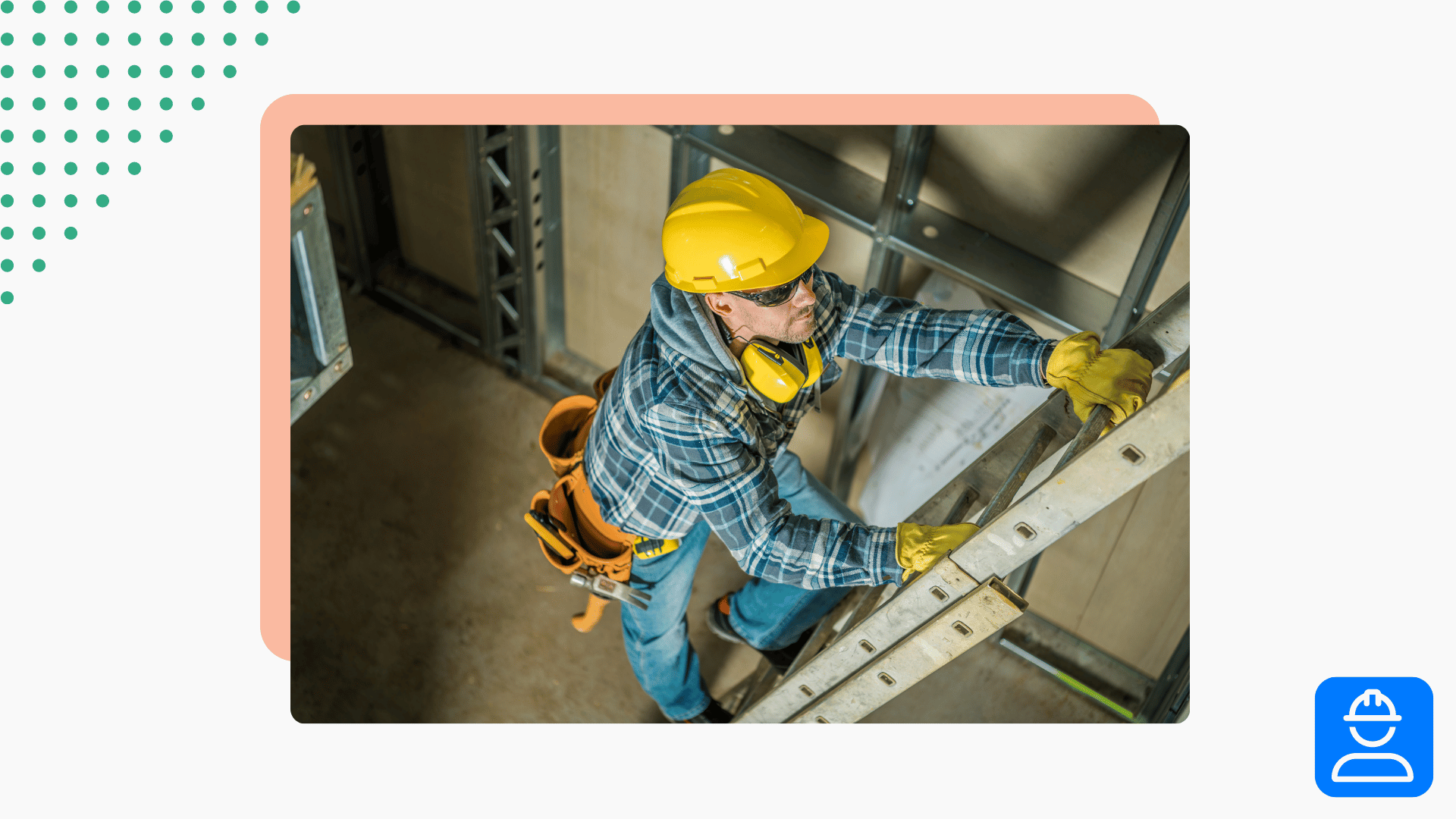Misuse of ladders is a common cause of workplace falls. That’s why it’s important to inspect them before each use. Conduct this ladder inspection toolbox talk to make sure your team understands what to look for and what to do about any issues.
Ladder inspection toolbox talk overview
In this toolbox talk, we’ll go over:
- Safe use of ladder equipment
- Ladder inspection requirements
- Taking ladders out of service
You should do an inspection every single time you set up a ladder—even if you used it just a day before. Even minor damage can make it unsafe for use, so never assume that just because it was fine yesterday, it’s fine today. Remember, consistent ladder inspection during your workday ensures everyone’s safety.
Free checklist!
Download this free checklist to get an idea of what to look for during your ladder inspections.
Safe ladder use
Here are some tips for safe ladder use:
- Only use ladders according to the manufacturer recommendations.
- Never exceed the maximum load specifications and rated capacity.
- When you’re finished with ladder equipment, store it properly out of harm’s way.
A ladder can create hazards whether you use it or not. Therefore, the best practice is to put away any equipment immediately after you finish using it. Not only does this prevent injuries, but it also reduces clutter and makes the workspace easier to navigate. It’s vital to keep these tips in mind during ladder inspection toolbox talks.
Inspecting ladder equipment toolbox talk
While inspecting a ladder, you should look for defects and signs of unsafe use. You can conduct inspections before, during, and after each use depending on the circumstances. Here are some of the questions you should ask:
- Is there any clutter or debris around the base of the ladder?
- Are there any hazards above the ladder?
- Are there any jagged surfaces that might snag clothing or cut skin?
- Does the ladder have any slip hazards like oil or grease on the rungs?
- Is the ladder tied or fastened to another ladder that’s not designed to do so?
- Is the ladder missing a spreader or locking device?
- Are any of the ladder rungs unevenly spaced or crooked?
If your answer to any of these questions is “yes,” then you need to fix the issue before you use the ladder. Discuss these points in your toolbox talks concerning ladder inspection.
Removing ladders from service
If you find that a ladder is unfit for use, you need to remove it from service, so no one uses it accidentally. You should red tag a ladder if it’s damaged or broken. This includes things like split rails, missing rungs, cleats, or steps, and corroded components. These practices are part of comprehensive ladder inspection toolbox talks.
Once you apply a red tag, make sure you move the ladder to the designated storage area. The maintenance team will work on fixing it and put it back into service once it’s ready.




